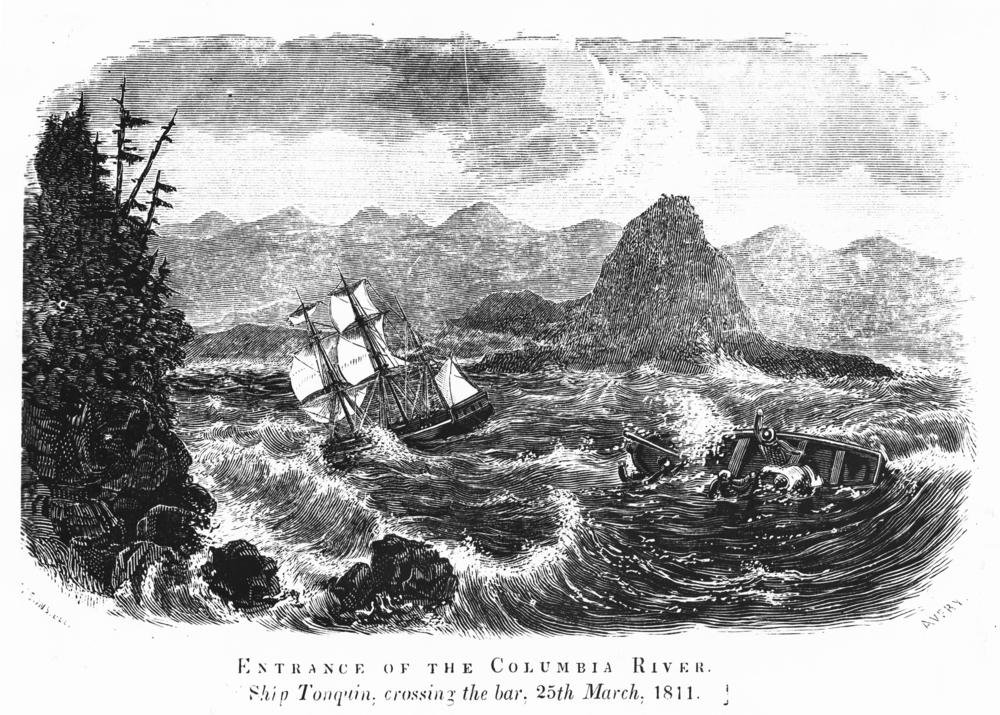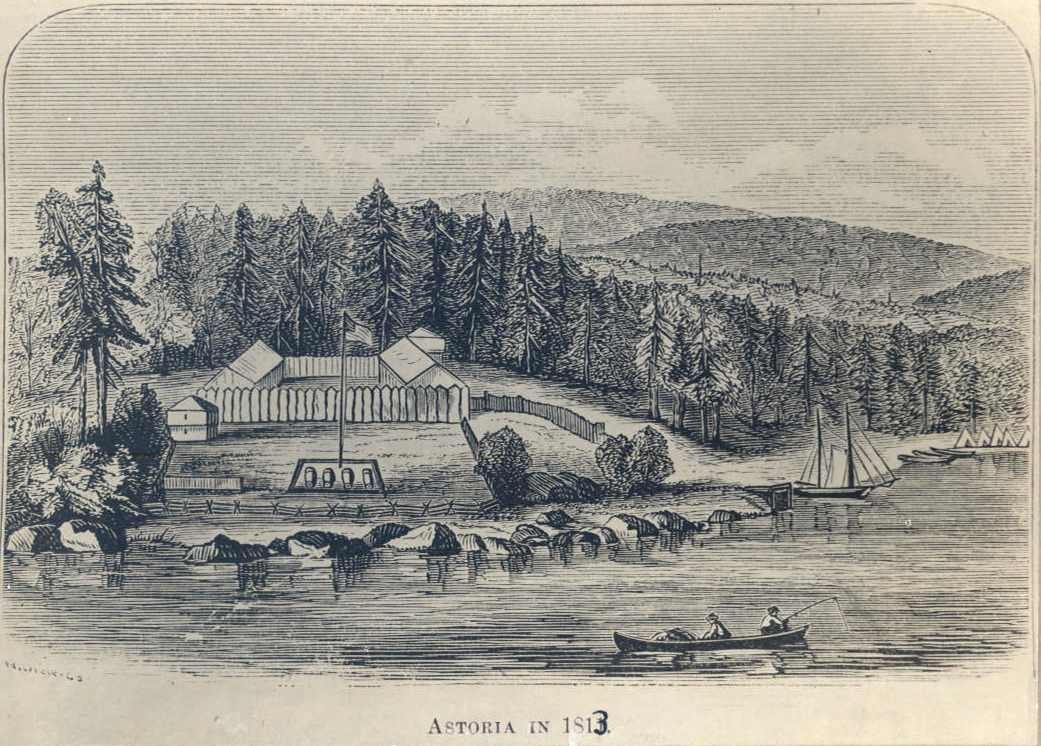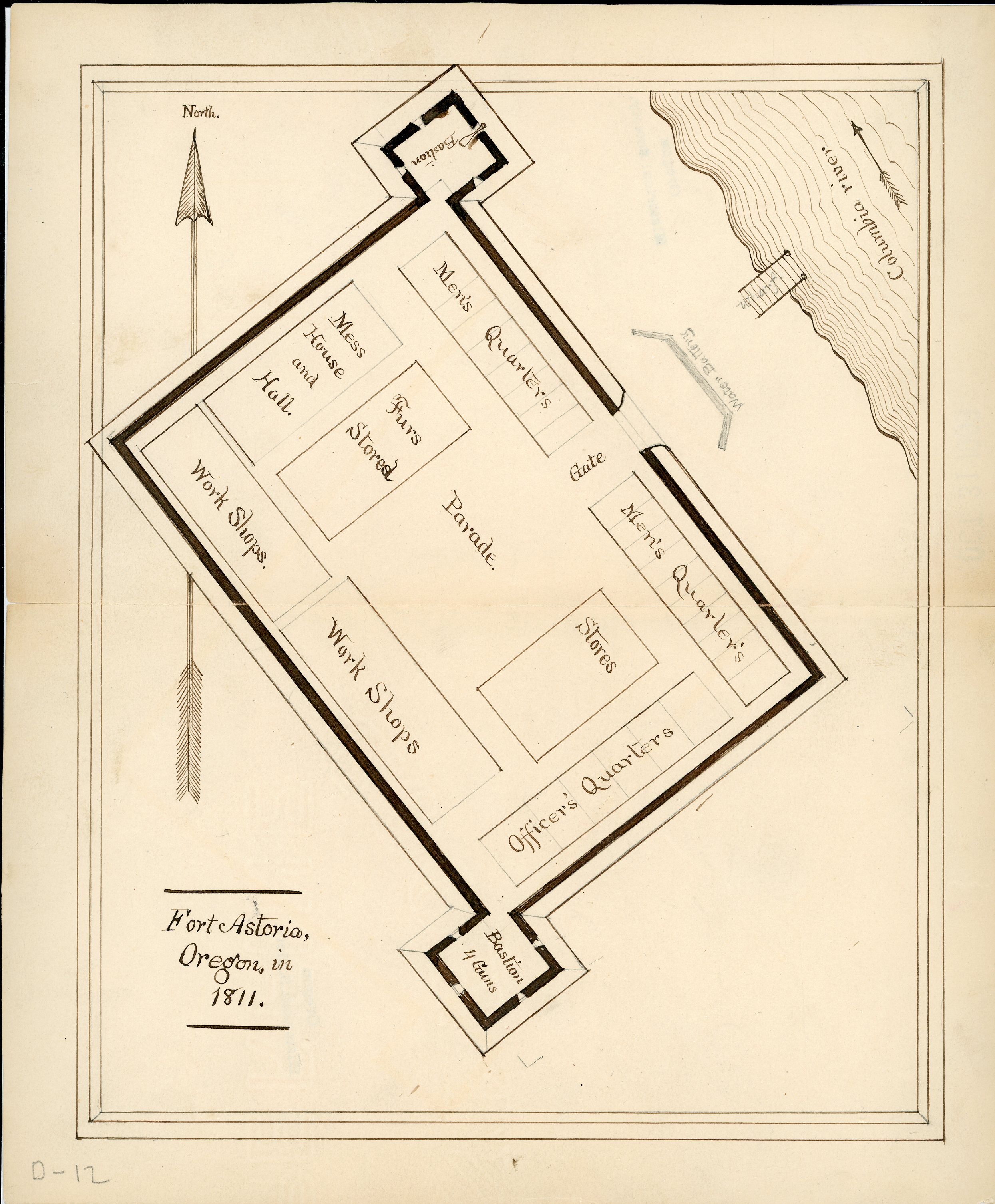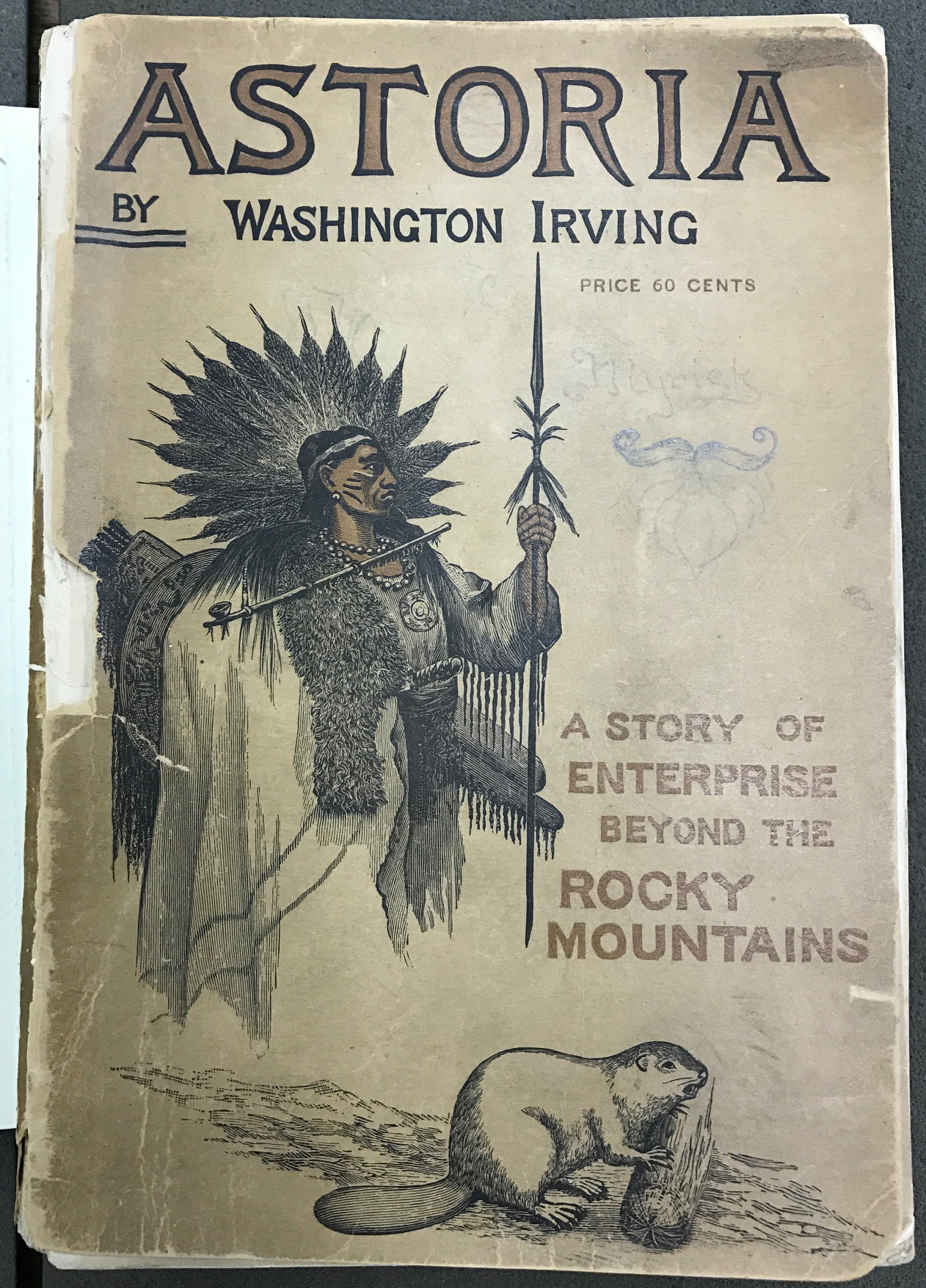Robert Stuart made a significant mark in the Oregon Country in two ways, first as a partner in the Pacific Fur Company, which established Fort Astoria in 1811; and second as the leader of an overland journey from Astoria to St. Louis in 1812. On that trek, Stuart found a wagon-friendly crossing of the Continental Divide at South Pass in present-day Wyoming. Three decades later, the pass, the most important landmark on the Oregon Trail, made mass migration to Oregon possible.
Stuart was born in Strathyre, Scotland, in 1785, the third of nine children. His father was a schoolmaster, which afforded Robert Stuart a solid Presbyterian education. In 1807, at age twenty-two, Stuart migrated to Montreal, where he joined his uncle, David Stuart, an agent with the North West Company. Three years later, the Stuarts became part of John Jacob Astor’s Pacific Fur Company. David Stuart secured a full partnership in the enterprise, while Robert became a clerk and later a junior partner. They took passage on the Tonquin, the Pacific Fur Company’s speedy, ninety-four-foot-long, three-masted ship, which Astor had purchased in 1807 and refitted.
In the Falkland Islands, en route to Cape Horn, Robert Stuart played a key role in preserving the integrity of the company’s mission. Tonquin captain Jonathan Thorn, in a pique, had sailed away and stranded several men on shore, including David Stuart. On board, Robert drew a pistol and pointed it directly at Thorn, reportedly warning him that he was “a dead man this instant” if he did not return and rescue his uncle and others. Thorn complied.
Once on the Columbia River in April 1811, Robert Stuart was one of the party to select the site for Fort Astoria, between Point George and Tongue Point, a few miles upriver from the Pacific. He was one of more successful Astorians in trading with Natives in coastal and river villages, although his success did not exempt him from armed conflict with some Natives who stole goods while transporting them across the portage at the Cascades. Stuart killed an Indian in the fracas and received a wound in the process. To supply the fort, he also led hunting expeditions up the Columbia and Cowlitz Rivers.
Stuart’s compatriots in the fur trade described him as physically strong, stern in character, and religiously devout. Because of his constancy under pressure, especially on expeditions he led into the Okanagan country and up the Columbia and Willamette Rivers, Pacific Fur Company partners selected him to lead an overland “express to New York” to carry business papers for John Jacob Astor. Ramsay Crooks and Robert McClellan, who were American Pacific Fur Company partners, and five men who had journeyed with William Price Hunt in 1810 from St. Louis to Astoria filled out Stuart’s party, which headed east retracing Hunt’s route in late June 1812.
When the group reached Union Pass in present-day Wyoming in mid-October 1812, Stuart turned south along the west side of the Continental Divide until he struck the upper Green River, where he skirted the west end of South Pass—a broad, twenty-mile-wide plain with grasses and a rolling landscape. Although Stuart did not know it at the time, he had discovered a potential wagon route that fur trader Jedediah Smith would confirm a decade later and that thousands of Oregon Trail migrants would use to summit the Continental Divide.
Stuart married Elizabeth Sullivan in July 1813 and continued working for Astor in New York as an agent to Montreal traders. By 1817, he was an agent of Astor’s American Fur Company at Michilimackinac, located on the straits between Lake Huron and Lake Michigan. He rose to chief trader at the fort in 1822 and remained there until 1834, when Astor sold his interest in the company. Stuart then moved to Detroit, where he became a real estate investor and, in 1840, served as state treasurer for Michigan. Stuart died in Detroit in 1848.
Robert Stuart left more than his discovery of South Pass as a legacy. He also made a literary mark. Sometime after completing the eastward trek from Astoria, Stuart collected his “traveling memoranda”—a travel diary—and wrote a narrative of events on the trail from Astoria to St. Louis. In 1834 or 1835, Washington Irving had use of Stuart’s narrative in creating the two-volume Astoria, which he wrote under contract for John Jacob Astor. Stuart’s narrative, however, remained unpublished (save for a truncated French language rendition that appeared in 1821) until 1935, when Philip Ashton Rollins edited a 391-page volume, The Discovery of the Oregon Trail, Robert Stuart’s Narratives of His Overland Trip Eastward from Astoria 1812-1813 for Charles Scribner’s Sons in New York.
-
![Engraving of Tonquin crossing Columbia River bar, March 25 1811.]()
Tonquin crossing Columbia Bar, 1811, ba006960.
Engraving of Tonquin crossing Columbia River bar, March 25 1811. Oreg. Hist. Soc. Research Libr., ba006960
-
![Earliest known illustration of Fort Astoria, by Gabriel Franchere, employed by Astor,]()
Fort Astoria, 1813.
Earliest known illustration of Fort Astoria, by Gabriel Franchere, employed by Astor, Courtesy Oreg. Hist. Soc. Research Library, OrHi51
Related Entries
-
![Astor Expedition (1810-1813)]()
Astor Expedition (1810-1813)
The Astor Expedition was a grand, two-pronged mission, involving scores…
-
Astoria (book, 1836)
Although Washington Irving (1783-1859) never traveled to Oregon Country…
-
![Fort George (Fort Astoria)]()
Fort George (Fort Astoria)
Fort George was the British name for Fort Astoria, the fur post establi…
-
![Fur Trade in Oregon Country]()
Fur Trade in Oregon Country
The fur trade was the earliest and longest-enduring economic enterprise…
-
![John Jacob Astor (1763-1848)]()
John Jacob Astor (1763-1848)
John Jacob Astor never visited Oregon or the Pacific Northwest, but his…
-
![Pacific Fur Company]()
Pacific Fur Company
The Pacific Fur Company, employee Alexander Ross wrote in 1849, was “an…
-
![Tonquin (ship)]()
Tonquin (ship)
The Tonquin, built in 1807, was described by Edmund Fanning, its builde…
-
![Wilson Price Hunt (1783-1842)]()
Wilson Price Hunt (1783-1842)
In 1809, John Jacob Astor selected Wilson Price Hunt to be his St. Loui…
Related Historical Records
Map This on the Oregon History WayFinder
The Oregon History Wayfinder is an interactive map that identifies significant places, people, and events in Oregon history.
Further Reading
Barry, J. Neilson. "The Discovery of the Oregon Trail." Pacific Northwest Quarterly (October 1937): 410-412.
Rollins, Philip Ashton, ed. The Discovery of the Oregon Trail. New York: Charles Scribner's Sons, 1935.
Ronda, James P. Astoria & Empire. Lincoln: Univ. Nebraska Press, 1990.







